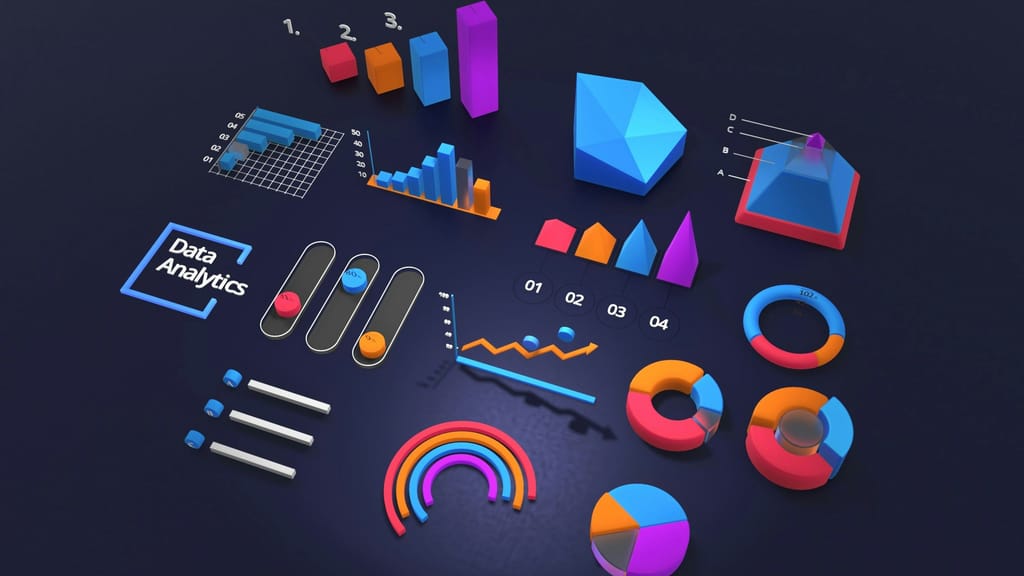A Beginner’s Guide to Data Parsing

In today's digital age, businesses and organizations generate vast volumes of data daily. Whether it's consumer information, financial records, or feedback forms, the ability to extract useful insights from this data is critical. Here's where data parsing comes into play.
Data parsing converts raw, unstructured data into a well-organized format, making it easier to manage, analyze, and use. If you're new to data parsing or want to learn more about it, don't worry. This guide will walk you through data parsing, explaining how it works and why it is such a vital tool for data management.
What is Data Parsing?

At its foundation, data parsing is converting unstructured or raw data into a structured format that is easier to read and deal with. This could include dividing a document into separate parts of information or turning large data sets into a simpler format, such as a table or list.
Assume you have much information, such as client orders, product descriptions, or raw survey results. Data parsing is similar to sorting a pile into clean rows and columns, making each piece of information easier to find and utilize.
Why Does Data Parsing Matter?
Understanding the significance of data processing is critical for exploiting it effectively. Here's why it is so important for both corporations and individuals:
Improved Data Organization
Data can take numerous formats, including text, spreadsheets, PDFs, emails, and more. Raw data, particularly from unstructured sources such as invoices, contracts, or consumer feedback, can be unorganized and difficult to manage. Data parsing arranges this disorganized data so that it may be easily analyzed and used. This is critical because organized data is easier to analyze, search for, and integrate with other systems.
Efficiency and Time Saving
Manually extracting and organizing data can be time-consuming. Imagine having to go through hundreds of invoices to retrieve payment information. Without data parsing, this task could take several days. However, data parsing systems may automatically extract and organize information into a usable format in seconds. This automation allows firms to save time and resources, which is especially significant when dealing with enormous amounts of data.
Improved data accuracy
When dealing with vast amounts of data by hand, human error is unavoidable. For example, copying information from paper forms or digital documents may result in mistakes. Data parsing reduces errors by automating the extraction and conversion steps, resulting in more accurate and dependable data for decision-making.
Scalability
As a company grows, so does the amount of data it processes. Manual data processing becomes impractical and wasteful as your dataset grows. Data parsing enables firms to extend their operations while maintaining accuracy and productivity. Whether you have dozens or millions of records, data parsing makes enormous datasets manageable and easy to evaluate.
Real-World Applications of Data Parsing
Let's take a look at some popular examples of data parsing in action, and how it streamlines jobs across many industries:
Invoice and receipt processing
Many businesses receive invoices in many formats, including PDFs, pictures, and physical documents. Data parsing technologies can extract critical information from these documents, such as invoice numbers, dates, amounts, and vendor names. This helps to automate accounts payable and receivable operations, eliminating manual work and errors.
Email Parsing for Lead Generation
When operating marketing campaigns or receiving inquiries, organizations frequently need to extract crucial information such as names, phone numbers, and email addresses from hundreds or even thousands of emails. Data parsing technologies may scan emails and extract data automatically, making lead management and follow-up more efficient.
Survey and Feedback Data Parsing
After conducting surveys or collecting feedback forms, firms must examine the responses to acquire useful insights. Parsing technologies can convert unstructured data into tables or graphs, facilitating the study of customer sentiment, preferences, and areas for development.
Social Media Data Parsing
In today's social media-driven environment, businesses are continuously monitoring posts, comments, and mentions to gain vital information. Data parsing can be used to extract meaningful phrases, hashtags, mentions, or sentiments from massive amounts of social media posts, allowing brands to remain ahead of trends and customer feedback.
How Does Data Parsing Work?

The process of data parsing varies according to the type of data being handled. Here are some popular methods for parsing data:
Text parsing
Text parsing is the process of extracting specific information from a body of text, such as sentences, words, and phrases. For example, you might wish to get a list of product names from a product description. This could include utilizing a parser to locate and extract pertinent keywords or sentences.
Document parsing
Specialized tools are used to parse and extract data from documents such as PDFs, Word files, and scanned photographs. Optical Character Recognition (OCR) technology is widely employed in this context to extract text from scanned documents or photos and turn it into machine-readable text that can be processed.
Data parsing from structured formats
Sometimes data is already structured, such as CSV files or XML documents. In this scenario, parsing simply means breaking down structured data into useful pieces such as rows and columns. This type of parsing is generally faster and easier than working with unstructured data.
Using DigiParser for Streamlined Parsing
One of the leading tools for simplifying the data parsing process is DigiParser. DigiParser helps automate the extraction of critical data from a wide variety of document types such as PDFs, scanned images, and text-based formats. By leveraging advanced algorithms and Optical Character Recognition (OCR) technology, DigiParser ensures high accuracy and efficiency in parsing, reducing manual intervention and human error. Whether you need to parse invoices, customer feedback, or social media data, DigiParser is designed to streamline the entire process, saving time and improving data integrity.
Benefits of Data Parsing for Your Business
Data parsing not only improves data management efficiency but also creates new business prospects. Here's a few ways it can help you:
- Better Decision Making: With structured, precise data, you can make informed, data-driven judgments. Whether you're collecting consumer feedback or reviewing sales data, parsed data makes it easier to identify trends and act promptly.
- Improved Customer Experience: By processing consumer data, organizations can acquire a better understanding of their target audience's requirements, behaviors, and preferences. This allows businesses to personalize their offers, provide better customer service, and foster stronger relationships.
- Increased operational efficiency: Parsing automates the data extraction process, freeing up critical time for your staff. Instead of manually evaluating and arranging documents, your staff may concentrate on more strategic duties that benefit the business.
- Data Consistency Across Systems: Parsing guarantees that data from disparate sources is consistently organized, making it easier to incorporate into business systems like CRM, ERP, and analytics tools. This consistency promotes seamless workflows and improved collaboration across divisions.
Conclusion
In a world where data is constantly generated, the ability to manage and analyze it efficiently is critical. Data parsing is an important step in converting raw, unstructured data into structured, usable information. Businesses that automate data extraction and categorization can save time, decrease errors, and improve efficiency, all while allowing for improved decision-making.
Whether you own a small business or work for a huge corporation, understanding and applying data parsing is a critical step toward realizing the full potential of your data. As the volume and complexity of data expand, tools and strategies for successful data parsing will become increasingly vital.
If you want to learn more about how data parsing can improve your data processing workflows, check out the other resources on our blog!
Transform Your Document Processing
Start automating your document workflows with DigiParser's AI-powered solution.